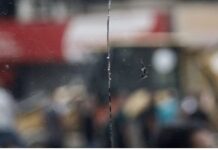Qassam Muaddi
Mondoweiss / June 23, 2024
Hezbollah spent the past decade accumulating military and political power to deter Israel — now it may face all-out war.
The southern Lebanese border has reached its highest point of tension since October 7. Both Hezbollah and Israel have escalated threats of all-out war, and now it seems that it might be an actual possibility.
On Thursday, June 20, CNN quoted unnamed U.S. officials saying that Israel had informed Washington of its plans to transfer military equipment to the northern border ahead of a war with Lebanon. The reports came a day after Hezbollah’s secretary general, Hasan Nasrallah, delivered a speech threatening that the Lebanese group would “fight without limits or restraints in the event that a war is imposed on Lebanon.”
Nasrallah gave his speech during a ceremony marking a week since the killing of Taleb Abdallah, a Hezbollah senior commander. Abdallah was assassinated in an Israeli airstrike on a southern Lebanese town, to which Hezbollah responded by launching the largest yet series of rocket attacks from Lebanon since October when hostilities between both parties began. Over 250 rockets and dozens of guided drones struck Israeli positions in the Galilee, causing widespread fires over thousands of miles in the area.
As Israeli officials called for a war against Hezbollah, the Lebanese group released ten-minute-long drone footage on Monday, June 17, showcasing strategic Israeli facilities in the Haifa area, including arms factories, oil and chemical warehouses, power plants, warships, the Haifa seaport, and crowded residential areas.
This latest escalation followed a visit of U.S. special envoy Amos Hochstein, who met Lebanese and Israeli officials in an attempt to defuse the situation on the southern Lebanese border. Hochstein proposed a plan that includes a withdrawal of Hezbollah’s forces to the north of the Litani River and a definitive drawing of borders between Israel and Lebanon
Hochstein’s proposal is, in essence, an attempt to dissociate the hostilities on the Lebanese border from the ongoing genocide in Gaza, to which Hezbollah is fundamentally opposed. This has led Hezbollah to tie the cessation of hostilities to Israel’s reaching of a ceasefire with Hamas. Hochstein’s plan, in contrast, would have Israel relieved from Lebanese pressure by tackling Lebanon’s own unresolved issues with Israel, especially the issue of borders.
Israel’s unresolved problems with Lebanon
Hezbollah is the main force leading the larger Lebanese resistance movement, which officially started after the withdrawal of PLO forces from Beirut and the entry of Israeli forces to the Lebanese capital in September 1982. At the time, the “Lebanese National Resistance Front” was formed, comprised of leftist and pan-Arab parties who began an armed campaign against Israeli forces. Hezbollah’s name wasn’t known to the public yet.
After the Lebanese Civil War ended in 1990, all Lebanese forces who took part in it agreed to disarm, including those forming the resistance front. While some communist and nationalist guerrilla units remained active in the occupied Lebanese south, the force that began to receive major support from both Syria and Iran was the Shiite Islamic Resistance of Lebanon and its political wing, Hezbollah. By 1992, Hezbollah was basically the only force fighting Israeli occupation south of the Litani.
Israel’s sudden withdrawal from the south of Lebanon in May of 2000 was seen by many, including in Israel, as a victory for Hezbollah for two main reasons.
First, because it happened without any security arrangements with the Lebanese state. Although the Lebanese army did deploy in the south, there were no restrictions on Lebanese military activity on the border similar to the ones imposed on Egypt in the Camp David Accords of 1979. Most importantly, there were no arrangements to guarantee any clearance of Hezbollah’s presence from the border.
Second, the political impact of the withdrawal led to a moment of reawakening among Arab audiences, who witnessed unprecedented images of Lebanese civilians pouring into evacuated Israeli detention centers and breaking their prisoners free. Lebanese farmers were seen tearing down military barbed wire fences and reaching their fields for the first time in 18 years, and villagers paraded abandoned Israeli vehicles through the villages of southern Lebanon. The nature of the withdrawal gave an unprecedented political boost to the cause of the resistance and to Hezbollah as a political party, as well as to the influence of its main ally and sponsor, Iran. This political strength was given an even greater boost after Israel’s war on Lebanon in 2006, during which it failed to achieve its stated goals and suffered military losses.
The major unresolved issue for both sides, however, is that there was no official drawing of mutually-recognized borders. The UN oversaw the defining of the line to which Israel withdrew, calling it “the blue line.” The line kept the Shebaa farms and the Kufr Shuba hills, two Lebanese farming areas, under Israeli control. The Shebaa and Kufr Shuba territory became the favorite space for Hezbollah to respond to Israeli incursions into Lebanon or the bombing of its members in Syria after 2011, considering that it was not attacking Israel per se, but occupied Lebanese territory.
The question of the drawing of these borders became tied to the region’s economic mega-games in 2009, when natural gas was discovered in the eastern Mediterranean, including near Lebanese shores. Israel began to offer contracts to gas companies for the exploitation of gas in the area disputed with Lebanon. In 2022, Lebanon and Israel signed a maritime border agreement after a series of negotiations, during which Hezbollah threatened to target Israeli gas facilities that remain in any waters claimed by Lebanon. Hezbollah even released footage of Israeli oil fields and of its own rockets. Many saw the agreement itself as another victory for Hezbollah.
Israel’s second attempt to undermine Hezbollah after the failed 2006 war was during the years following the outbreak of the Syrian war in 2011. Israel systematically bombed targets it claimed to belong to Iran and Hezbollah in Syria, taking advantage of the chaos in the country. Israel maintained that it was targeting the corridors that Iran used to deliver weapons to Hezbollah. Israeli military officials called these strikes “the battle between the wars,” aimed at weakening their northern foe.
The intervention of Hezbollah in the Syrian war, on the side of the Syrian government, was a major element in securing the defeat of rebel groups in strategic areas like the eastern Damascus Ghouta, the Qalamoun mountain chain, and the Quseir area, all of which were key points for any takeover of Damascus by the rebels. Hezbollah also helped defeat ISIL on the Lebanese border, fighting beside the Lebanese army and becoming a major player in the regional war to defeat the fanatic group. Most importantly, Hezbollah secured the necessary territory in Syria to maintain its open supply lines from Iran by itself, hence outflanking the Israeli attempts to weaken it.
In essence, Hezbollah’s strategy since the early 1990s and throughout the major events in the region has been that of accumulating force, both military and political. Coupled with that is the gradual rise in Hezbollah’s military experience from fighting in Syria, the strengthening of its alliances, and the expansion of its influence, both domestically and regionally. All this has been used to present a serious element of deterrence to Israel.
Yet the purpose of this accumulated force has always been pursued to prevent a war with Israel, rather than to provoke it.
U.S. failures and the war that nobody wants
Israel is faced with its own dilemma. It, too, does not want a war with Lebanon, because it knows that Hezbollah does have the capacity to harm Israel. Since October 8, Hezbollah has systematically targeted Israeli surveillance and spying capacities along the border, while at the same time gathering intelligence on Israel’s military deployments. Israel, which doesn’t have the necessary intelligence on Hezbollah’s forces, knows that it faces a large disadvantage if it goes to war now on its northern front.
At the same time, the escalation between both parties has exhausted all other stages of escalation before reaching an all-out war. While Hezbollah cannot back down from conditioning the cessation of its cross-border attacks on the end of the war in Gaza, Israel is incapable of finding a way to admit that the chimera of “total victory” has been buried in the sands of Gaza.
Hezbollah is facing a hard choice, taking a significant gamble with its country’s security. But Israel faces an even greater strategic dilemma — in order to avoid a very destructive war for which it is not prepared and which it cannot win, it needs to accept the end of its current genocidal course in Gaza. The only way out for Israel seems to be in the hands of the U.S. — the only party capable of enforcing an end to the war.
Yet the U.S.’s only strategy since October 7 seems to be exhausting all means of avoiding exerting pressure on Israel — not even after Israeli officials repeatedly rejected the ceasefire deal that the U.S. presented as an Israeli plan.
This U.S. policy is unlikely to change in the months ahead of the presidential elections. Although nobody wants a major war on the Lebanese border, which can have major regional repercussions, the possibility of its actualization is closer than ever. It might come to pass that the war no one wants will break out because the only side who could have stopped it chose not to act.
Qassam Muaddi a Palestinian journalist and writer who has covered Palestinian social, political and cultural developments in Arabic, French and English since 2014












